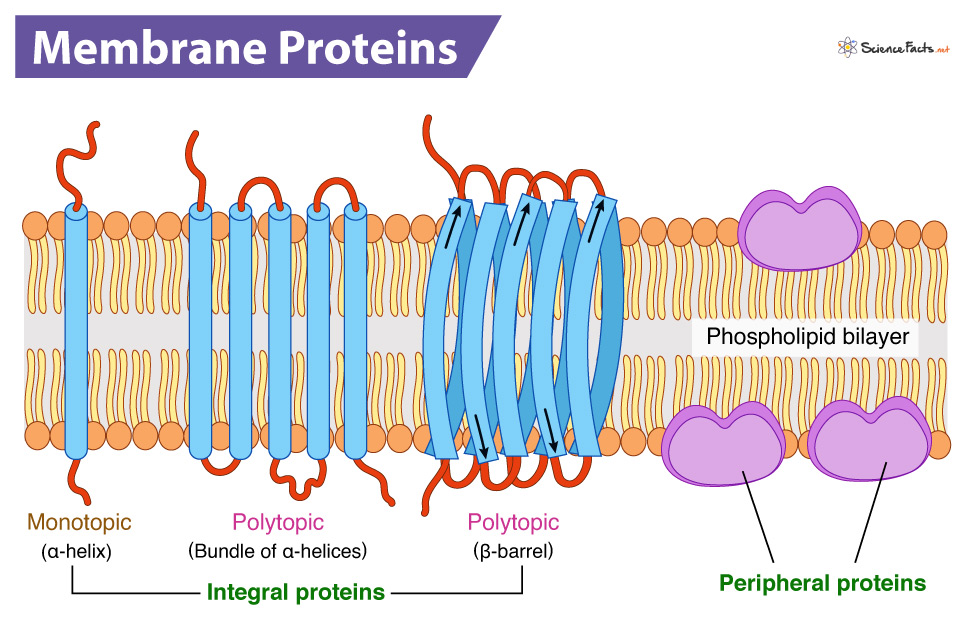The positions of amino acids in a membrane protein are based on their polarity:
Non-polar (hydrophobic) amino acids associated with the lipid bilayerPolar (hydrophilic) amino acids are found internally and face aqueous solutions
Types of Membrane Proteins with Structure
What are the Functions of Membrane Proteins
1. Integral Membrane Proteins
Integral membrane proteins, intrinsic proteins, or transmembrane proteins, are permanently embedded within the plasma membrane. They contain residues with hydrophobic side chains that penetrate the phospholipid bilayer, thus anchoring the protein to the membrane. These proteins cannot be readily isolated from the cell membrane. The only way to remove them is using synthetic detergents, non-polar solvents, and denaturing agents that destroy the hydrophobic interactions of the bilayer. Depending on their relationship with the lipid bilayer, integral membrane proteins can be classified into two basic types: Some specific integral membrane proteins are glycoprotein, Na+/K+ ATPase, Ion channels and gates, and glucose permease.
2. Peripheral Membrane Proteins
Peripheral membrane proteins, extrinsic proteins, are only temporarily associated with the membrane. Most of them are hydrophilic. They are either attached to integral membrane proteins or can be directly bound to the bilayer’s polar head. So they can be easily removed using any polar solvent. On the cytoplasmic side, the cytoskeleton holds these proteins in position. Peripheral membrane proteins are primarily associated with ion channels and transmembrane receptors, allowing cell signaling. Some examples of peripheral membrane proteins are spectrin, phospholipases, and hormone receptors.
- Enzymatic Functions: Some membrane proteins act as enzymes with their active sites exposed to their substrate molecules. Sometimes, several enzymes in a membrane organize as a team, carrying out sequential steps of a metabolic pathway. 2. Transportation: Some proteins are responsible for facilitated diffusion and active transport. During facilitated diffusion, the membrane-spanning proteins provide a hydrophilic channel that allows the passage of particular solutes. In contrast, others work by a conformational change. Some of these proteins use ATP to actively pump substances across the membrane, thus helping in active transport.
- Signal Transduction: The membrane protein receptor may have a binding site for a specific chemical messenger, such as a hormone. A conformational change to the protein allows sending the signal to the cell interior by binding to a cytoplasmic protein, thus activating a cascade of signaling proteins. 4. Cell Recognition: Some membrane proteins, mainly glycoproteins, serve as identification tags that are recognized explicitly by membrane proteins of other cells.
- Intercellular Junctions: Membrane proteins of adjacent cells may connect through gap junctions or tight junctions, helping in their communication. 6. Attachment: Microfilaments or other cytoskeleton elements may be non-covalently bound to membrane proteins. This attachment helps maintain cell shape and stabilizes the location of specific membrane proteins.
